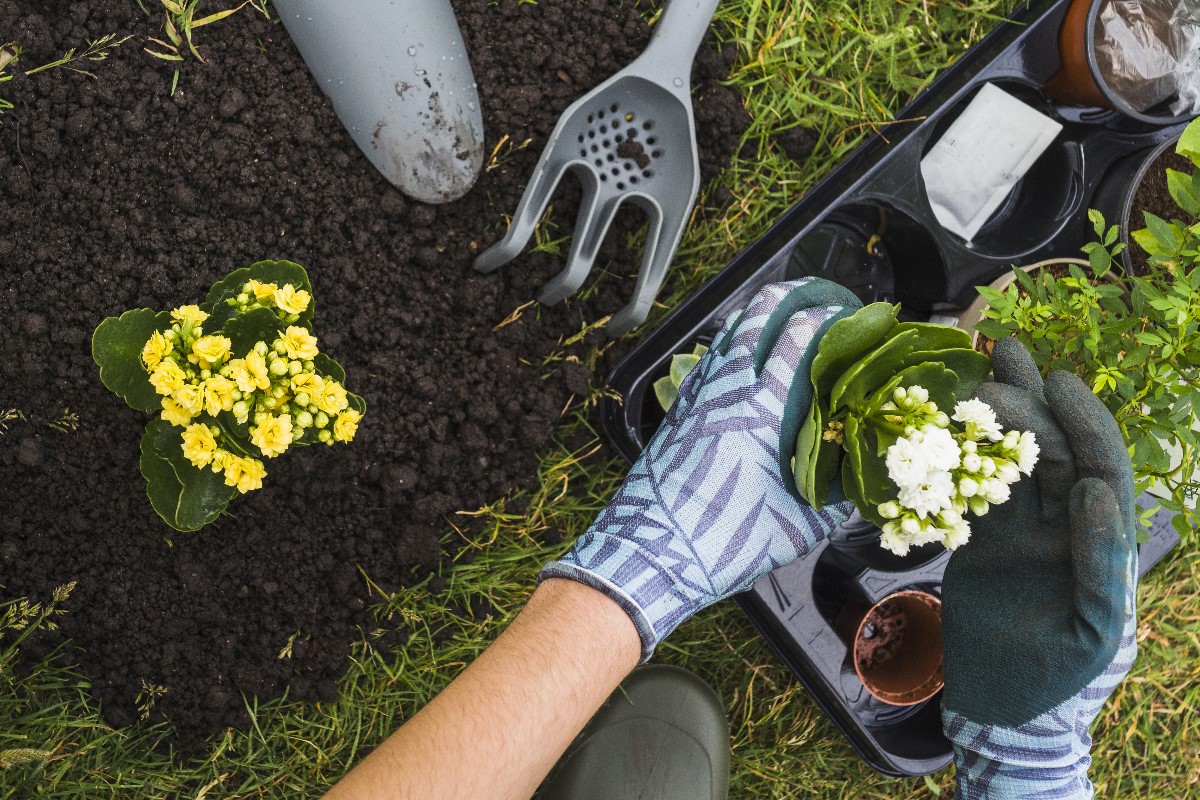
Plants do not benefit from the autumn-winter period. The garden revives only in spring, then there is the most work. It is worth taking care that the plants have the best possible conditions for vegetation and fast regeneration. Warmer days are also the time for sowing and planting shrubs.
First of all, it is worth tidying up the garden after autumn works. After the ground has thawed it should be raked so that the soil does not lose moisture with the arrival of sunny days. Moreover, it is extremely important to remove dried leaves and stems of perennials. Clearing the beds will allow young shoots to develop. When the sun is high and the soil is no longer firm, dig it up. This will help remove weeds and loosen the top layer of soil
The end of February and beginning of March is the best time for initial lawn care. The entire lawn should be cleaned of dry leaves and felt . You may need to aerate the soil. The easiest way to do this is to prick the soil with a pitchfork. At the end of February it is a good idea to press down clumps of grass with a roller. After loosening the soil, it is advisable to start filling in patches of grass in mid-March. Cover the seeds with a thin layer of soil and water and fertilize regularly.
Do this at the end of February or the beginning of March. It is important to check the weather before doing this because unexpected frosts can have a negative effect on winter protected plants. Covering does not eliminate completely, which means that the agro-textile or straw mats should be kept on hand at all times in case of lower temperatures . March and April are difficult months in terms of weather, so it is worth approaching them with a certain amount of detachment
>> See: How to grow a monstera? All about care
The beginning of spring is the best time to trim the crowns of fruit trees. This involves removing excessively thickened shoots in such a way that they get as much sunlight as possible. It is worth removing dried fruit, damaged shoots and parts attacked by pests from the trees
At the beginning of spring you should try to give ornamental shrubs some shape. This is also the ideal time to remove withered twigs or some stems. Remember that spring flowering shrubs should be pruned only after they bloom. These include, among others, willow and forsythia. Summer flowering shrubs are pruned at the beginning of March. At this time it is worth to start checking the coniferous shrubs. You can start pruning them, but you should limit yourself to the shoots damaged during the winter. Then it is recommended to lubricate the cuts with horticultural ointment. The preparation must contain a fungicide
Spring is the time to sow many vegetables and flowers. If you have a vegetable garden at home, you can plant broccoli, cauliflower, cabbage, leek or celery at this time. Vegetables are grown from seedlings, which can be purchased at any gardening store
This is also the time when ornamental flowers are sown. These include velvets, asters, levconias, and lion’s mane. They are sown into pots and balcony boxes in spring. They can be transplanted later
Plants which are missing from your garden should already be planted in spring. This applies especially to decorative trees and shrubs. Be sure to follow the instructions provided by the gardening store, but there is nothing to stop you from doing this at the start of spring. The site for new plants should be loosened, weeded and cleaned. After planting, the plants should be watered. It is advisable to plant bare-root plants at this time. After placing them in the ground, the roots should be trimmed and a mound should be made around them.
The time after frost is the best time to fertilize. This should be done after cleaning and loosening the soil and planting new plants. For this purpose, it is worth using compound fertilizers rich in nitrogen, you can choose slow-acting ones. Fertilizers must be used in accordance with the manufacturer’s guidelines, then we gain confidence that the nutrients will be properly assimilated by the plants
Photo source: Designed by Freepik